REVIEW: SONOS FIVE (THIRD GENERATION)-We live in a crazy time. High fives are no longer allowed. You should not want music from Five and the weirdest stories about 5G circulate. If we are to believe the aluminum hatfolders, the cows would get webbed feet, the udders would end up on their backs and, moreover, only give sour chocolate milk. Fortunately, there has been one Five that we could still fall back on: the Sonos Play 5. The last model has also been given a new name, the Five. It is our honor to test the now third generation.
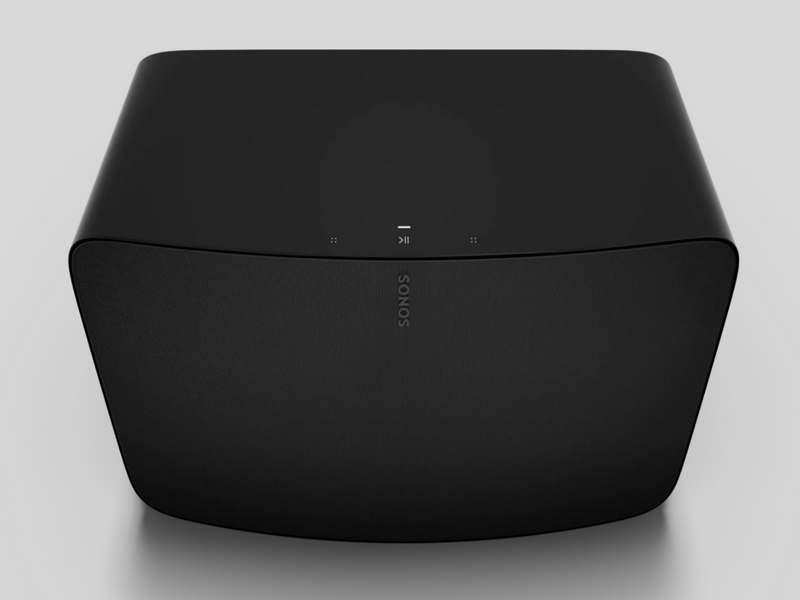
In all fairness, our opinion of Sonos products is quite diverse. However, the Play 5 has always had a warm place in our hearts, certainly the second generation. This was accompanied by the launch of True Play. This is a method by Sonos itself to measure the acoustics of the room and use that data to make the audio sound optimal. Now, since the second generation of the Play 5, a lot more manufacturers have jumped on board the ‘WiFi Speaker train’, and that poses a big challenge for Sonos, because they have to keep their reputation. Let’s see.
Familiar jacket, new engine
To begin with, the SONOS Five (Third Generation) looks just like the previous Sonos Play: 5 (gen2) on the outside. Although the white variant is now also available with a white grille. However, the biggest adjustments are under the hood. Sonos has developed a completely new app for the new line. The Sonos Five makes optimal use of this with its new components. And vice versa, the app works very well because of those renewed components. For example, the memory has been addressed, the processor / processing power and better WiFi. There are also 3 specially designed woofer, which should ensure an impressively low spectrum. In addition, there are also 3 tweeters, 1 of which is placed in the middle and 2 directed outwards. Each unit in the Five is controlled by its own Class D amplifier. Sonos uses that to make ‘phased array’ possible, with which a wide sound image is created. We will of course test that!
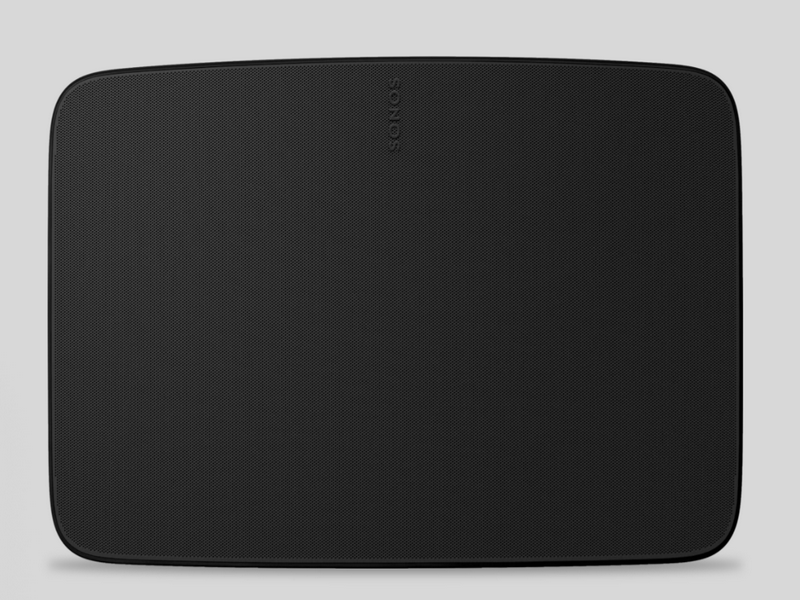
You can of course tune the sound with True Play, which should also give an extra step in optimizing your sound reproduction. We also find a 3.5 mm connection on the back, for example for a record player, and an ethernet connection. Thank you, Sonos! We always prefer an ethernet port. WiFi works great, don’t get us wrong. But if you really want to get the best sound out of it, we recommend physically connecting the Sonos Five with an ethernet cable.
Something we did not expect, but what makes us very happy, is the extensive support of different file formats . AND !, with this new generation also support for 24 bit audio. Bring it on with high quality audio! By the way, if you want to enjoy real stereo sound, grab a second Sonos Five, put both speakers upright and enjoy 2.0, as it should be.
SONOS Five (Third Generation): Familiar feeling
When unpacking and setting it down, we get that familiar Sonos feeling again. As if nothing has changed – although we do have to download a new app, the Sonos S2 app. We feel that installation and sign-up process is a bit faster than before. If you have worked with the old app, it will take some getting used to. However, after two weeks of playing with the Sonos Five, we notice that the app is more stable than the previous one. And after those two weeks, this new app has also become completely familiar to use.
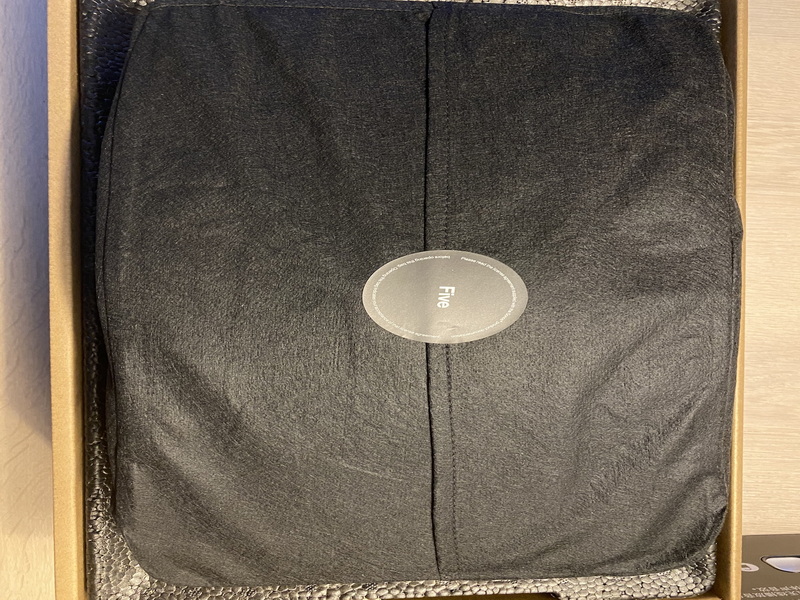
Out of the box, the Sonos Five sounds very full and rich. That’s something we adjusted after 30 minutes of listening. We can set the EQ in the menu under settings. Very nice, because we immediately see that loudness is on. Great for a party (if that’s allowed again), but we prefer to turn it off. The reproduction is then a bit less exaggerated. Sound is more natural, less pushed.
In the menu we can also turn the status light on or off, and even the Touch buttons at the top. This is of course ideal if the Sonos Five is in a bedroom, or within reach of children. Something that is also new is Sonos Radio. Where you would use TuneIn with other brands, for example, Sonos has opted for a different approach, including music lists.
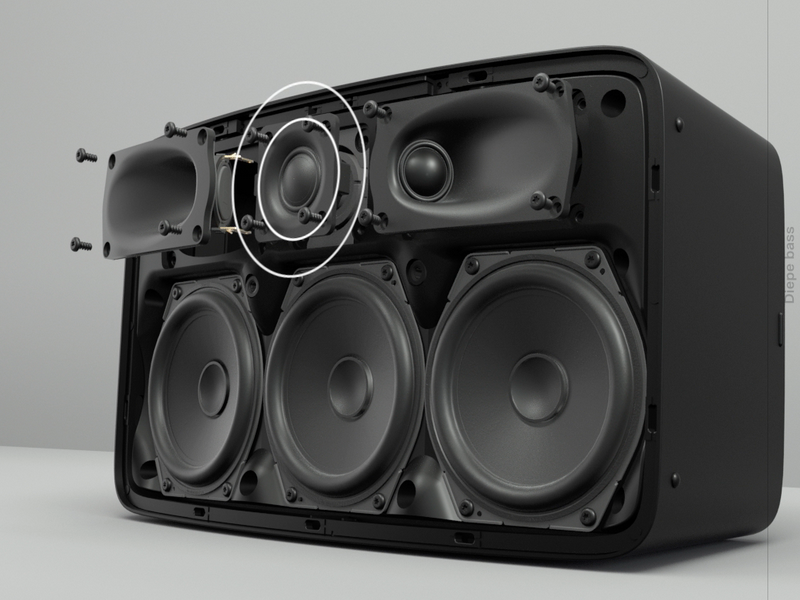
A nice advantage of SONOS Five (Third Generation) is the enormous support for streaming services. Almost any services can be added via the Sonos. Be it Soundcloud or Qobuz, pair and listen. And for real enthusiasts there is still the possibility to connect their own music collection. For example, we have a nas with a large collection of music. It can easily be linked to it for playback.
Listen for a long time
After a first week, we start to hear that the Sonos Five is at ease. We have found the correct audio settings and the Five sounds reasonably tuned in. That sense of ease is mutual. In the morning, the Sonos turns on with Q-Music in the background, during the day it changes into an album, a missed broadcast, a podcast or the HIFI.NL playlist. As easy as the Sonos Five is to play, it is so easy to listen to.
If you put the SONOS Five (Third Generation) down, give it time to build up that convenience. Let’s clarify that with an example. Grab the Top 40, which is full of “music” to cash with, put together without any kind of emotion. Above all, that should sound good and pop out of your speaker. A simple example is Head & Hart – Joel Corry. Sounds great, pops out of your speaker and the lyrics are so weepy. Switch on the loudness via the Sonos app and the room will be filled with a thick and rich sound image. Turn off the loudness and listen to I Was Born To Love You – Ray LaMontagne and there is a completely different speaker. The big advantage now is that the music sounds more natural and we can listen to it longer and enjoy it more. The music comes into its own much more. With loudness on, listening fatigue quickly occurs.
The Sonos Five is a hefty speaker. You don’t hide the Sonos Five very easily in the interior. The advantage of this is that there is room for power and quality. That is good to hear. Even at low volume we hear that the Sonos Five sounds good and fills the room with music. The HIFI.NL playlist contains the song Lost in Yesterday – Tame Impala. At a low volume, the low tones sound nuanced. It gives space to the vocals and instruments. If we increase the volume to about a quarter of the maximum, we hear that everything is included. The high tones do not distort and gradually increase along with the mid and low tones. The whole remains in balance. While the volume is already quite room-filling. So that’s a nice plus for the Sonos Five.
SONOS Five (Third Generation): To sum up
We really liked the new Sonos Five. In particular, the step to support for high quality audio. This may not immediately be the spearhead for the target group that buys Sonos, but it does show that Sonos continues to develop. And that the demand for higher quality reproduction is met. The new app takes some getting used to, but that is only a matter of time. The Sonos Five is easy to use and even easier to listen to. And that is exactly what Sonos is aiming for.
If you don’t want to match speakers with an amplifier, but you want good sound that fills the entire room, then you can take a Sonos Five. But if you put a Sonos Five down, don’t immediately think that you are an audiophile.
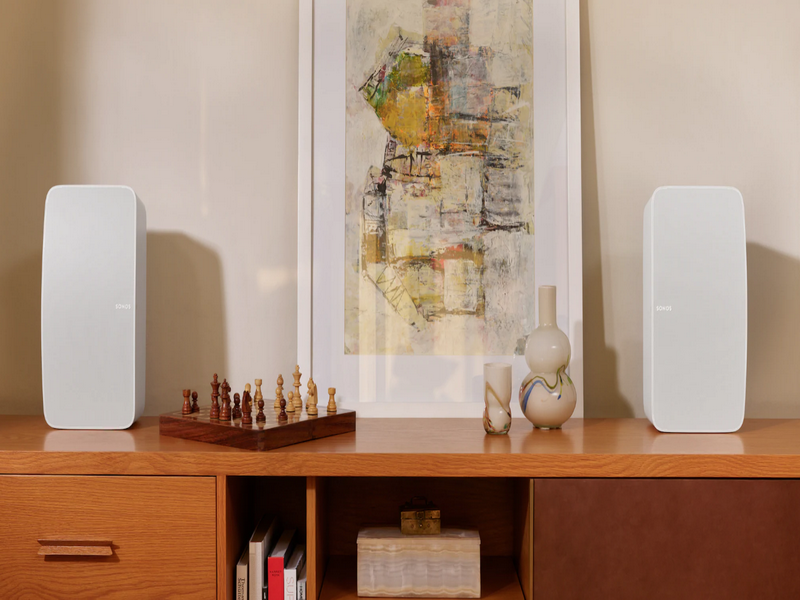
Are there any comments or remarks? Certainly, because we still miss an optical connection or an HDMI. That would make the Sonos Five the perfect speaker from Sonos. And if you are just starting with wireless or WiFi speakers, the price is solid. Because in this price segment there have been a lot of developments and there is a lot of choice. At the same time, with the Five, you get the best Sonos speaker that is currently available at home.
Conclusion
The new Sonos Five is an old familiar one, but with a new engine. Internal developments have worked out well for Sonos. The sound quality has clearly improved and the new app offers possibilities for the future. If Sonos continues this trend, we can’t wait for the rest of the new products.
PLUS POINTS
- High Res support
- Easy installation and operation
- Sonos ecosystem
- Room-filling sound
MINUSES
- No digital input





